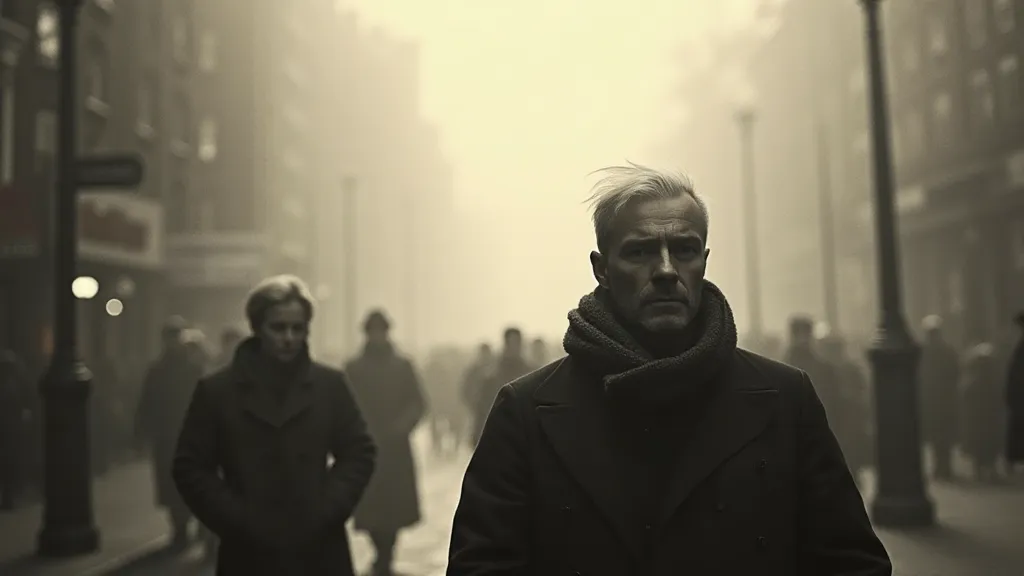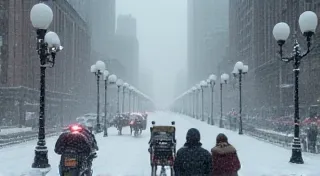The Rustling Echoes: How Victorian England’s ‘Great Smog’ Forged a New Literary Landscape
The air hangs heavy today, doesn't it? Even in a region known for its dramatic weather, there's a certain oppressive quality. It makes you think, doesn's it? Makes you ponder the weight of the atmosphere, the unseen forces that shape our lives. It’s easy to forget, in our relatively clean air, the sheer brutality of a past shrouded in darkness – a darkness far more potent than mere absence of light. I was recently examining a collection of antique accordions, their bellows stiff with age, their keys yellowed and worn. As I gently oiled the intricate mechanisms, a memory surfaced – a historian's lecture on the Great Smog of London, 1952. Suddenly, those accordions weren’t just instruments; they were relics of a time when the very air itself was a threat, a palpable symbol of an era struggling to reconcile progress with devastation.

A Silent Killer: The Context of the 1952 Smog
To truly appreciate the impact of the Great Smog, it's vital to understand the conditions that spawned it. Post-war England was rebuilding, fueled by coal – the lifeblood of industry. Homes were heated with it, factories ran on it, and the resulting emissions, combined with a stagnant anticyclone and unusually cold temperatures, created a deadly cocktail. The “pea-soupers,” as these fogs were colloquially known, were a recurring phenomenon, but the one in December 1952 was unprecedented in its lethality. Visibility plummeted to near zero, disrupting transportation, forcing businesses to close, and casting an eerie stillness over the city. The official death toll eventually reached over 12,000, with many more suffering from respiratory illness and long-term health problems. The immediate repercussions led to crucial shifts in environmental policy, but the event itself wasn't entirely unexpected given historical climate patterns – a similar phenomenon, though on a different scale, occurred in other regions and time periods. The study of historical heatwaves and other climate anomalies helps us understand the factors that can contribute to such devastating events.
The Victorian era, spanning roughly from 1837 to 1901, had already witnessed numerous bouts of severe fog. However, the sheer scale and devastating consequences of the 1952 event amplified existing anxieties and catalyzed a profound shift in the social and artistic consciousness. The smog wasn’t simply an inconvenience; it was a brutal illustration of the costs of unchecked industrialization, a chilling reminder of the fragility of human existence within a rapidly changing world.
The Atmospheric Opacity: A Literary Metaphor
The darkness wasn't merely literal; it seeped into the literary landscape, becoming a powerful metaphor for the social and psychological anxieties of the time. Victorian literature was already grappling with themes of poverty, inequality, and the alienation of the individual in a burgeoning industrial society. Dickens, Eliot, Hardy – their works explored the gritty realities of urban life, but the Great Smog provided a visceral, suffocating backdrop against which these struggles were amplified. The opacity of the smog itself mirrored the obscured truths about class disparities, environmental degradation, and the hidden costs of progress.
Consider the burgeoning social realism movement. Prior to the smog, writers like Charles Dickens had employed a degree of sentimentality and romanticization, even when depicting hardship. The suffocating atmosphere of the smog stripped away that veneer. It demanded a harsher, more unflinching portrayal of reality. It spurred a deeper engagement with the lived experiences of the working class, whose suffering was most acutely felt within the choking air. The smog wasn't just something to be described; it was a character in itself, an oppressive force shaping the lives of its inhabitants. It served as a stark illustration of the broader environmental challenges that humans have faced throughout history, and that continue to impact weather patterns and regional climates; for instance, the impact of volcanic eruptions on regional climates has been a recurring theme in historical records.

Echoes in the Works: Authors and the Smog
While the immediate literary response to the smog was limited – the catastrophe unfolded during a period of wartime austerity and focused media coverage – its long-term influence is undeniable. Writers already attuned to the social ills of the era found their voices sharpened by the experience. The sense of despair, the feeling of being trapped within a system that prioritized profit over human well-being, found its way into their narratives.
The works of Graham Greene, for example, often explore themes of moral ambiguity and the corrosive effects of societal corruption. One can argue that the psychological claustrophobia prevalent in novels like Brighton Rock and The Heart of the Matter was subtly influenced by the pervasive feeling of suffocation that permeated London in the wake of the smog. The smog, in essence, provided a physical manifestation of the moral decay that Greene sought to expose in his writing. The broader context of this period was one of significant climatic volatility – an era reminiscent of the “Year Without a Summer” just a few decades later, highlighting the unpredictable nature of Earth’s climate system.
Similarly, the poetry of T.S. Eliot, already steeped in a sense of disillusionment and fragmentation, gained a further layer of resonance. The blurred lines and obscured visions of The Waste Land can be seen as echoes of the impenetrable fog that choked London. The sense of a world stripped bare, exposed in all its ugliness, found a tangible parallel in the smoky atmosphere. The echoes of such unusual weather events reverberated through society, influencing artistic expression and shaping cultural perceptions – much like the records of historical hailstorms, which often elicit a sense of awe and sometimes, fear.
Restoration and Remembrance: Lessons from the Past
Returning to those antique accordions, I'm struck by the parallels between their restoration and the need to confront our environmental legacy. Each cracked key, each stiffened bellow, tells a story of neglect and the ravages of time. Restoring them requires careful attention to detail, a respect for the original craftsmanship, and a willingness to acknowledge the passage of time. It’s similar to how we must confront the historical context of environmental disasters like the Great Smog – acknowledging the past’s mistakes while striving to build a more sustainable future. The process of recovering from such events isn’t just about addressing the immediate consequences; it’s about learning from the past and adapting to a changing environment.
The Clean Air Act of 1956, enacted in direct response to the tragedy of the Great Smog, marked a turning point in environmental policy. However, it serves as a stark reminder of the consequences of complacency and the importance of vigilance. The rustling echoes of that suffocating fog should resonate not just in the annals of history but in the choices we make today. As I gently replaced a faulty reed in an accordion, I thought about the air we breathe, the legacy we leave behind, and the responsibility we have to ensure that the rustling echoes of the past serve as a constant, cautionary reminder. The event underscored the precariousness of human well-being in the face of environmental change, a lesson that remains critically relevant as we grapple with contemporary challenges like climate change and air pollution.

The Great Smog wasn't just a tragedy; it was a catalyst, a crucible that forged a new era of literary consciousness and, hopefully, a more environmentally responsible future. The whispers of those who struggled to breathe within the smog should continue to inspire us to protect the air we share and to seek a world where progress and well-being go hand in hand. The legacy of the event continues to shape our understanding of the intricate relationship between human activity and the natural world, prompting us to reflect on the long-term consequences of our choices and strive for a more sustainable and equitable future. It's a reminder that the echoes of the past—whether in the rustling of antique bellows or in the accounts of historical climate events—hold valuable lessons for navigating the challenges of the present and shaping the world we wish to create for generations to come.





